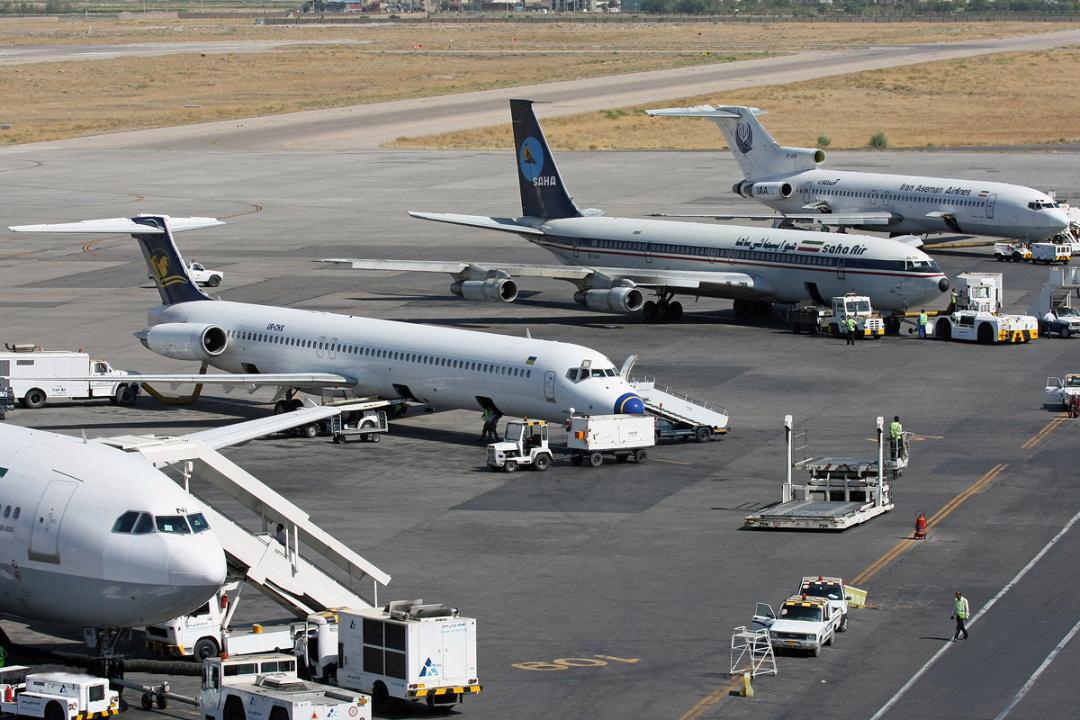Iran’s Aviation Organization, which is the main body charged with the oversight and inspection of the country’s airline industry, has attracted fierce opposition to its proposal that mergers and acquisitions (M&A) among smaller companies could reduce costs and improve competition in a market bogged down by longstanding sanctions (imposed by the West against Iran over its nuclear energy program) and outdated aircraft.
Iran has a relatively large airline market that counts over 13 million domestic passengers annually. A vast majority of these passengers fly with only a handful of companies. CAO believes these giants cause smaller rivals to remain in the cold by reducing their profitability. Mergers and acquisitions (M&A) among smaller competitors would not only encourage larger companies to operate more cost-efficiently, but would also strengthen the profit base of less prominent firms, the organization argues.
“Currently three companies claim at least 60 percent of flights, while 12 other firms only operate 35 percent. Mergers could bring balance back into this picture,” Mehr News Agency quoted deputy head of CAO, Mohammad Khodakarami, as saying.
The three largest companies by fleet size and number of passengers are Iran Air, Mahan Air and Aseman Airlines.
“When several airline companies merge, they become more effective and their costs fall,” Khodakarami added.
Nonetheless, he emphasized that CAO is only a lobby organization without any direct influence on the decision-making of airline companies, stating that: “These companies are owned to some extent by the private sector. While not being able to force them, we can encourage them to merge.”
Meanwhile, powerful players in the airline industry have rejected CAO’s proposal for fear that it would create large, heavily bureaucratized and inefficient organizations.
The Association of Iranian Airlines, the umbrella-organization publicly representing most of Iran’s airlines, has expressed animosity to the idea. Abdolreza Mousavi, head of the AIA, told ISNA that there are no advantages to M&As in the airline industry, saying that: “These mergers are definitely unprofitable. Neither large nor small airlines are willing to pursue any of this.”
He added that currently, companies have more flexibility as independent entities, seen for example in their decision-making, relationship to the market, upkeep and purchase of spare parts.
“Not one unblemished [airline] company with the ability to manage other firms can be found in Iran,” he claimed.
Former deputy head of CAO, Farajollah Karimi, also expressed reservation about encouraging mergers under current circumstances, saying a merger is not possible without proper organization and expertise.
“Airlines should first of all be brought under a single system of management for repair and maintenance-related jobs,” he said, stressing that each company has its own particular internal structure which cannot be easily merged without causing financial losses. “The financial and administrative departments of airlines cannot and should not be merged,” Karimi claimed.
Some smaller airlines have already merged some of their activities. The CEO of Zagros Airlines, which is based in Abadan Airport, says: “Airline activities such as handling and catering can be merged. Obviously, these actions require investment.”
CAO has helped organize cooperation between smaller airlines. Currently, Zagros, Kish Air, Taban, Shahed and Naft cooperate in several areas. It is expected that Caspian and Iran Air Tour will merge in the near future. Cooperation remains limited to small economies of scale, mostly located in airports, such as catering services.
In Iran, a significant amount of labor, time and money is channeled to repair and upkeep to cope with outdated fleets and the difficulty to import spare parts.
Experts have pointed out that by 2025 Iran will need an extra 400 to 500 aircraft. The bulk of aircraft has aged. Flag carrier Iran Air’s fleet of 47 active aircraft has an average age of 25 years, according to the CAPA Center for Aviation. The total fleet of aircraft reaches 245, but only 146 of these are active, with the rest parked in hangars for fear of lacking safety.
Mousavi claims that between 500 billion and 1 trillion rials ($15million -$30 million) is needed to buy new aircraft and parts. Abbas Akhoundi, minister of roads and urban development, has an even higher figure in mind. According to his ministry’s calculations, at least $15 billion needs to be spent on the airline industry, with the bulk going to buying aircraft and the remainder to upgrading airport facilities.
A few weeks ago, news came out that Mahan Air had successfully imported nine large Airbus planes via an intricate system of contractors and dealers spread out over Europe and the Middle East. While Mahan is forbidden by the US government from importing spare parts or aircraft, the Financial Times reported on May 21 that a complex scheme had allowed Mahan to circumvent the obstacles and add 3,000 seats to the industry’s total of 22,446.
The average age of the nine recently imported planes is also reported to be about 15 years. This new acquisition, the country’s largest in several years, has brought down the average age of Iran’s fleet to 19 years, from 22 years last year. In comparison, in the whole of the last Iranian year (ended March 20), only 14 new aircraft entered the country.
The government has also introduced a new law forbidding the import of aircraft older than 15 years. Previously, companies were allowed to import planes built up to three decades earlier.
The Iranian airline industry has experienced a slight uptick in fortunes since the 2013 Geneva Accord that removed the import of spare parts from the list of goods under sanctions. Boeing and Airbus almost immediately entered into talks with their respective governments to export spare parts to Tehran.
So far, Boeing has managed to obtain the permits but beyond the sale of manuals, exports to Iran have been postponed until the company is given the greenlight by the US government, pending a nuclear agreement and the removal of sanctions.


